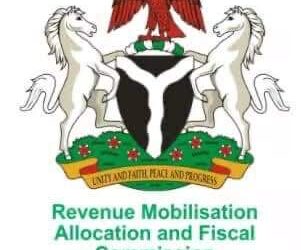Despite a slight drop in liquidity levels on Monday, the Open Buy Back (OBB) and Over Night (OVN) rates opened the week at 8.0 per cent and 8.8 per cent, lower than last week’s close of 8.4 per cent and 9.3 per cent.
Following Thursday’s Open Market operation (OMO) auctions, OBB and OVN rates trended higher to close at 8.6 per cent and 9.6 per cent respectively while system liquidity, buoyed by substantial OMO repayment, settled at N718.7billion. By the end of the week, OBB and OVN rates printed at 2.7 per cent and 3.4 per cent respectively while system liquidity stood at N233.5billion.
In line with its schedule, the CBN conducted a Primary Market Auction (PMA) on Thursday, offering and selling – across all tenors – instruments worth N134.0billion while receiving a total subscription of N338.2billion. The sale was at marginal rates of 11.08 per cent, 11.60 per cent and 13.20 per cent, showing a mild decline when compared with prior auction rates of 11.10 per cent, 11.75 per cent and 13.30 per cent for the 91, 182 and 364-day instruments respectively.
The CBN also conducted an OMO auction with a total sale of N120.9billion (91-day: N0.9billion; 182-day: Nil; 364-day: N120.0billion) on Thursday, well above the same day’s OMO maturities of N472.4billion. There was strong investor interest for the 364-day instrument as the N120.0billion on offer couldn’t match the N436.9bn total subscription. However, the 91-day (Offer: N20 billion; Subscription: N0.9billion) and 182-day (Offer: N50.0billion; Subscription: Nil) instruments were grossly undersubscribed. The OMO instruments were issued at marginal rates of 11.59 per cent (98-day) and 13.40 per cent (364-day).
In the secondary market, there was a relatively flattish performance as average rates across maturities only increased a tad (+1bp) Week-on-Week (W-o-W) to 12.4 per cent. The 182-day (-41basis points (bps) W-o-W) instrument enjoyed more demand than the 364-day (-15bps W-o-W) instrument with rates settling at 11.5 per cent and 12.9 per cent respectively. On the contrary, the 91-day instrument saw some selling interest as rates edged up 59bps W-o-W to 12.0 per cent.
In the coming week, we expect the CBN to guide rates through interventions as we anticipate inflows from OMO instruments worth N347.2billion. We also expect average rates in the T-Bills market to fall in the coming week as system liquidity continues to give the bulls legs to run.
Bonds market
Bullish sentiment resurfaces in the domestic bonds market. Last week, average bond yield declined by 1bp to close at 14.3 per cent as investors bought more of the long-term instruments. Of the 4 trading days this week, the market recorded gains on Monday and Wednesday as yields pared 8bps and 2bps respectively. However, sell-offs engulfed the market on Thursday with yields trending higher by 9bps and the market closed flat on Friday. Across the term structure, the longer-dated instruments recorded a bullish performance as yields fell 7bps. On the other hand, yields on the short and medium-dated instruments rose by 32bps and 2bps respectively due to selloffs.
Bullish momentum remains unrelenting in the SSA Eurobonds market as all instruments gained W-o-W save the Zambian 2027 instrument which recorded a 2bps rise in yields. As observed in the past weeks, the Zambia 2022 and Zambia 2024 had the most buying interest as yields on both instruments fell 182bps and 173bps respectively. Again, the Ghanaian and Nigerian 2049 instruments trailed with 85bps and 80bps decline in yields respectively.
For the corporate Eurobonds that we track, the narrative remains the same as in the previous weeks with drop in yields across all instruments except the South African Sibanye Gold 2023 instrument which recorded a 5bps increase in yields. The most attractive instruments for the week were the Mauritius Bayport Management 2022 and Nigerian Seplat 2023 instruments, which shed 90bps and 75bps W-o-W in yields respectively. As major central banks maintain an easy monetary policy in the face of slowing global growth, we expect foreign investors to remain attracted to high yielding assets in emerging and frontier markets.
Foreign exchange market
Naira was relatively stable despite the declining foreign reserves.The central bank of Nigeria (CBN) spot rate opened the week at N307.00/$ but closed flat at N307.00/$, depreciating five kobo W-o-W from N306.95/$ the previous week. At the parallel market, the exchange rate traded flat all week to close at N360.00/$. At the Investors’ & Exporters’ (I&E) FOREIGN Exchange (FX) Window, the NAFEX rate opened the week at N362.23$ and closed at N362.77/$ on Friday, depreciating eight kobo W-o-W from N362.69/$. Activity level in theI&E Window declined 65.4 per cent to $404.9million from $1.02billion recorded in the previous week.
At the FMDQ Securities Exchange (SE) FX Futures Contract Market, the total value of open contracts of the Naira settled at $10.4 billion, up $187.2million (2.0 per cent) from US$10.2bn in the prior week. The SEPT 2020 instrument (contract price: N365.21) received the most buying interest in the week with additional subscription of $72.9million which took total value to US$193.3m. Conversely, the JUNE 2020 instrument (contract price: N364.4) was the least subscribed, with an additional subscription of US$11.6m for a total value of $223.9billion.
“In the coming week, we expect rates to trade at similar levels across the various FX segments”, said afrinvest.



